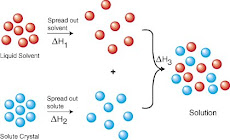Subject:
U.S. Environmental Protection Agency Weekly Digest Bulletin
U.S. Environmental Protection Agency Weekly Digest
FOR IMMEDIATE RELEASE January 21, 2010
EPA Increases Transparency on Chemical Risk Information
Action part of continued comprehensive reform of toxic substance laws
WASHINGTON — As part of Administrator Lisa P. Jackson’s commitment to strengthen and reform chemical management, the U.S. Environmental Protection Agency (EPA) today announced a new policy to increase the public’s access to information on chemicals. Starting today, EPA has announced its intention to reject a certain type of confidentiality claim, known as Confidential Business Information (CBI), on the identity of chemicals. The chemicals that will be affected by this action are those that are submitted to EPA with studies that show a substantial risk to people's health and the environment and have been previously disclosed on the Toxic Substances Control Act (TSCA) Chemical Inventory. This action represents another step to use the agency’s authority under the existing TSCA to the fullest extent possible, recognizing EPA’s strong belief that the 1976 law is both outdated and in need of reform.
“Assuring the safety of chemicals is one of Administrator Jackson's top priorities for EPA's future,” said Steve Owens, assistant administrator for EPA’s Office of Prevention, Pesticides and Toxic Substances. “The American people are entitled to transparent, accessible information on chemicals that may pose a risk to their health or the environment. We will continue taking steps that increase transparency and assure the safety of chemicals in our products, our environment and our bodies.”
Under TSCA, companies may claim a range of sensitive, proprietary information as CBI. Under Section 8(e) of TSCA, companies that manufacture, process, or distribute chemicals are required to immediately provide notice to EPA if they learn that a chemical presents a substantial risk of injury to health or the environment. The Section 8(e) reports are made available on EPA’s Web site. However, until today, companies would routinely claim confidentiality for the actual identity of the chemical covered by the Section 8(e) submission, so the public posting of the information would not include the name of the chemical. The new policy announced today ends this practice for chemicals on the public portion of the TSCA Inventory. This new policy will increase the amount of information available by granting the public access to the chemical identification information submitted, along with other health and safety data under Section 8(e).
In the coming months, EPA intends to announce additional steps to further increase transparency of chemical information.
EPA’s new policy on TSCA Section 8(e) submissions is being published in the Federal Register.
More information on the new policy: http://www.epa.gov/oppt/tsca8e/
More information on EPA’s principles for comprehensive TSCA reform: http://www.epa.gov/oppt/existingchemicals/pubs/principles.html
domingo, 24 de enero de 2010
EPA new move towards letting people know on dangerous chemicals
martes, 19 de enero de 2010
ODOR CONTROL BY HYDROGEN PEROXIDE
Many of us know the advantages of using Hydrogen Peroxide as a safe bleaching agent on fabrics, even colored ones, , as a stain remover in carpets and walls, and also as a great disinfectant and antiseptic solution.
However great applications are being preferred for odor control, specially in waste water treatment plants, sewage treatment; utilizing wet scrubber or direct injection oxigenation, avaiding use of Caustic or Chlorine Bleach solutions.
The Hydrogen Peroxide in addition to high grade aeration, is used to control sulfide gas odors ( rotten eggs), by converting it into sulfates and avoiding corrosive sulfuric acid formation. Hydrogen Peroxide reaction and degradation products are environmentally safe, mainly water and oxigen. For more information, can go to Water World magazine January 2010 edition, www.solvay.com (INTEROX) or www.eco2tech.com.
Chemtron in Florida , www.chemtron.com has a product for this application under the name of: Oxy Treat 28.
viernes, 15 de enero de 2010
IMPORTANCE OF PROPER DISPOSAL OF FEMININE HYGENE PRODUCTS
Feminine hygiene products typically receive very little attention, even in the jan/san market. The industry is still predominantly men, who might not fully understand women’s issues or realize the inherent problems that women have. This lack of understanding is why it is important for jan/san distributors to keep feminine hygiene products in mind when discussing the restroom with their clients. It’s a matter of educating the customer on the importance of feminine hygiene products, letting them know what products are available and informing customers of their benefits. When discussing feminine hygiene with their customers, distributors should stress the importance of proper disposal options, in addition to offering convenience with dispensers, tampons and pads. Even though stall receptacles have a low price point, many facility managers overlook their need, assuming women will dispose of sanitary products in the regular waste receptacle. In reality, many women flush them down the toilet, resulting in potential clogs. The distributor salesperson should help customers understand that a $20 receptacle can save hundreds or thousands of dollars in plumbing bills.
Emptying any waste receptacle has a certain level of safety concern connected to it. Coming into contact with biohazards, harmful chemicals, sharp objects or bodily fluids is always a threat for cleaners, and waste receptacles in restrooms are no exception. Although feminine-hygiene waste includes blood, cleanup of these products does not fall under the Occupational Safety and Health Administration’s (OSHA) bloodborne pathogens standard. Red-bagging is not required, however, OSHA does “expect products such as discarded sanitary napkins to be discarded into waste containers, which are lined in such a way as to prevent [cleaner] contact with the contents.” Receptacles found in the stall units typically use anti-leak plastic or wax-coated paper liners to collect waste. The wax option sits up straight in the unit, but can’t be tied up when thrown out. The plastic liners collapse and must hang over the edge of the unit, but they can be tied up for easy emptying. These plastic liners also come in biodegradable and perfume-impregnated varieties. No matter which liner is used, cleaners should always wear gloves and use caution when collecting waste from disposal units. Once out of the stall, bags should be placed in the regular waste receptacle before being thrown into the garbage.
MICROFIBER MOPS / FLOOR CLEANING
In a profession where repetitive motion and heavy lifting is always problematic, lightweight microfiber products are a welcome solution. In fact, microfiber has become widely available in all types of cleaning tools today and is most pervasive in mops. While traditional cut-end mops still make up a large portion of mop demand, there is a growing trend toward using high-quality looped-end and microfiber products. The popularity of microfiber has a lot to do with its functionality as the fiber can be used wet or dry, and with conventional, flat and dust mops. In addition to being lighter than a traditional fiber, microfiber reduces water and chemical usage. Microfiber also addresses another pressing concern, particularly for foodservice and healthcare facilities: cross-contamination. A microfiber pad can be used once, easily replaced with a fresh pad, and — if the cleaning solution remains untouched by a dirty pad — no cross-contamination will occur. Color-coding can also be done with microfiber tools. This reduces the risk of cross-contamination by ensuring certain colored tools are only used in specific areas. A tremendous benefit is that microfiber pads can be laundered and used hundreds of times.
COMMENT
SEE: cleanlinkminute@cleanlink.com
jueves, 7 de enero de 2010
EPA WILL LIST FORBIDDEN CHEMICALS
EPA Plans to List ‘Chemicals of Concern’
According to GreenBiz.com, the U.S. Environmental Protection Agency has announced plans to establish a “Chemicals of Concern” list and is beginning a process that may lead to regulations requiring significant risk-reduction measures to protect human health and the environment.
The agency’s actions are being undertaken under its authority of the existing Toxic Substances Control Act (TSCA), recognizing EPA’s “strong belief” that the 1976 law is both outdated and in need of reform.
In addition to phthalates, the chemicals EPA is addressing are short-chain chlorinated paraffins, polybrominated diphenyl ethers (PBDEs) and perfluorinated chemicals, including PFOA. These chemicals are used in the manufacture of a wide array of products and have raised a range of health and environmental concerns.
EPA also recently announced that three U.S. companies agreed to phase out DecaBDE, a widely used fire retardant chemical that may potentially cause cancer and may impact brain function.
Last September, Administrator Lisa Jackson outlined a set of agency principles to help inform legislative reform and announced that EPA would act on a number of widely studied chemicals that may pose threats to human health. When TSCA was passed in 1976, there were 60,000 chemicals on the inventory of existing chemicals. Since that time, EPA has only successfully restricted or banned five existing chemicals and has only required testing on another two hundred existing chemicals. An additional 20,000 chemicals have entered the marketplace for a total of more than 80,000 chemicals on the TSCA inventory.
This is the first time EPA has used TSCA’s authority to list chemicals that “may present an unreasonable risk of injury to health and the environment.” The decision to list the chemicals further signals this administration’s commitment to aggressively use the tools at its disposal under TSCA. Inclusion on the list publicly signals EPA’s strong concern about the risks that those chemicals pose and the agency’s intention to manage those risks. Once listed, chemical companies can provide information to the agency if they want to demonstrate that their chemical does not pose an unreasonable risk.
More information on EPA’s legislative reform principles and a fact sheet on the complete set of actions on the four chemicals can be found at http://www.epa.gov/oppt/existingchemicals.
Vistas de página en total
GREEN CHEMICALS
Also the materials have to meet with toxicity and health requirements regarding inhalation, dermal and eye contact. There is also a specific list of materials that are prohibited or restricted from formulations, like ozone-depleting compounds and alkylphenol ethoxylates amongst others. Please go to http://www.greenseal.com/ for complete information on their requirements.
For information on current issues regarding green chemicals, see the blog from the Journalist Doris De Guzman, in the ICIS at: http://www.icis.com/blogs/green-chemicals/.
Certification is an important — and confusing — aspect of green cleaning. Third-party certification is available for products that meet standards set by Green Seal, EcoLogo, Energy Star, the Carpet & Rug Institute and others.
Manufacturers can also hire independent labs to determine whether a product is environmentally preferable and then place the manufacturer’s own eco-logo on the product; this is called self-certification. Finally, some manufacturers label a product with words like “sustainable,” “green,” or “earth friendly” without any third-party verification.
“The fact that there is not a single authoritative standard to go by adds to the confusion,” says Steven L. Mack M.Ed., director of buildings and grounds service for Ohio University, Athens, Ohio.
In www.happi.com of June 2008 edition, there is a report of Natural formulating markets that also emphasises the fact that registration of "green formulas" is very confused at present, due to lack of direction and unification of criteria and that some governmental instittion (in my opinion the EPA) should take part in this very important issue.










































